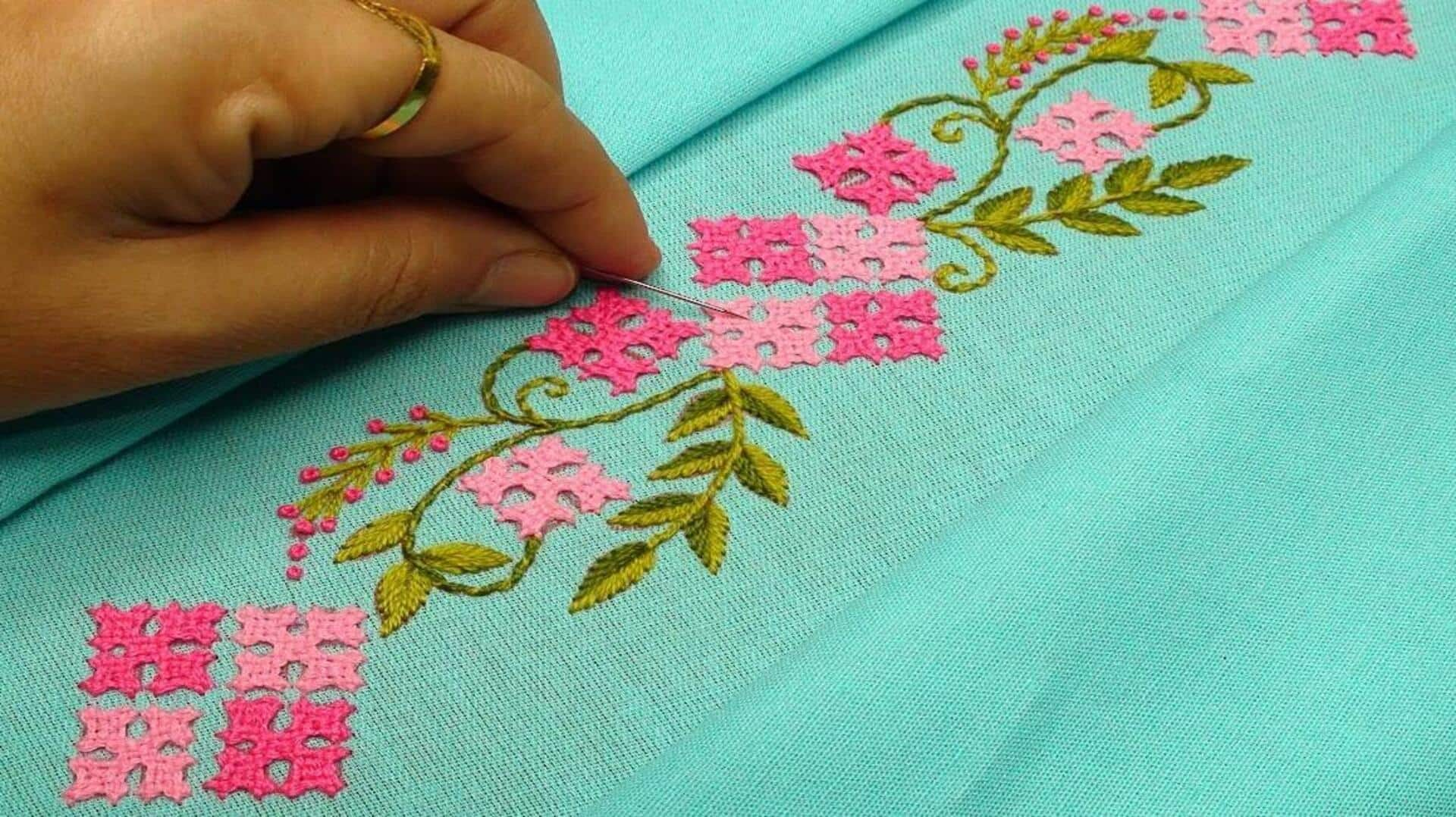
Exploring Sindhi embroidery and its timeless techniques
What's the story
Sindhi embroidery, originating from the culturally rich Sindh region of Pakistan, is a centuries-old art form celebrated for its vibrant hues and intricate designs.
This traditional craft has stood the test of time and has also evolved into a cultural emblem for Sindhis.
Here's a journey through Sindhi embroidery and its techniques from mirror work and Sindhi taka to Kutch work and Gujrati stitch.
Mirror
Mirror work
Central to Sindhi embroidery, mirror work stands as an iconic technique, adorning fabrics with delicate mirrors secured by an array of stitches.
Renowned for its ability to create mesmerizing designs, this ancient artistry graces not only shawls and dupattas but also various garments like kurtas and sarees, reflecting the dexterity and artistic finesse inherent in Sindhi craftsmanship.
Sindhi taka
Sindhi taka
While taka means a stitch in Hindi, Sindhi taka is an intricate technique that fuses several stitches to shape small geometric marvels and breathes life into bedspreads, tablecloths, and a spectrum of household items.
This unique form of embroidery transcends mere decoration; it represents a fusion of precision and creativity, each stitch echoing the cultural and aesthetic significance ingrained in every Sindhi tapestry.
Kutch
Kutch work
Originating from Gujarat's Kutch region, Kutch's work unfolds its embroidery narrative through elaborate designs crafted with chain stitch, buttonhole stitch, and satin stitch.
Revered for its detailed craftsmanship, this embroidery style graces a variety of Indian outfits like sarees, ghagras, dupattas, cholis, and other regional attires, embodying a harmonious dialogue between Gujarat's heritage and the traditional Sindhi aesthetic.
Gujrati stitch
Gujrati stitch
Gujarati stitch, a captivating fusion of chain and buttonhole stitches, intricately embellishes sarees and other attires.
This technique weaves a constant rhythm of stitches, harmonizing diverse embroidery styles to enrich Sindhi craftsmanship.
The resulting designs reflect the perfect blend of cultural influences from the Indian subcontinent, creating an elegant web that adorns clothing with timeless beauty.